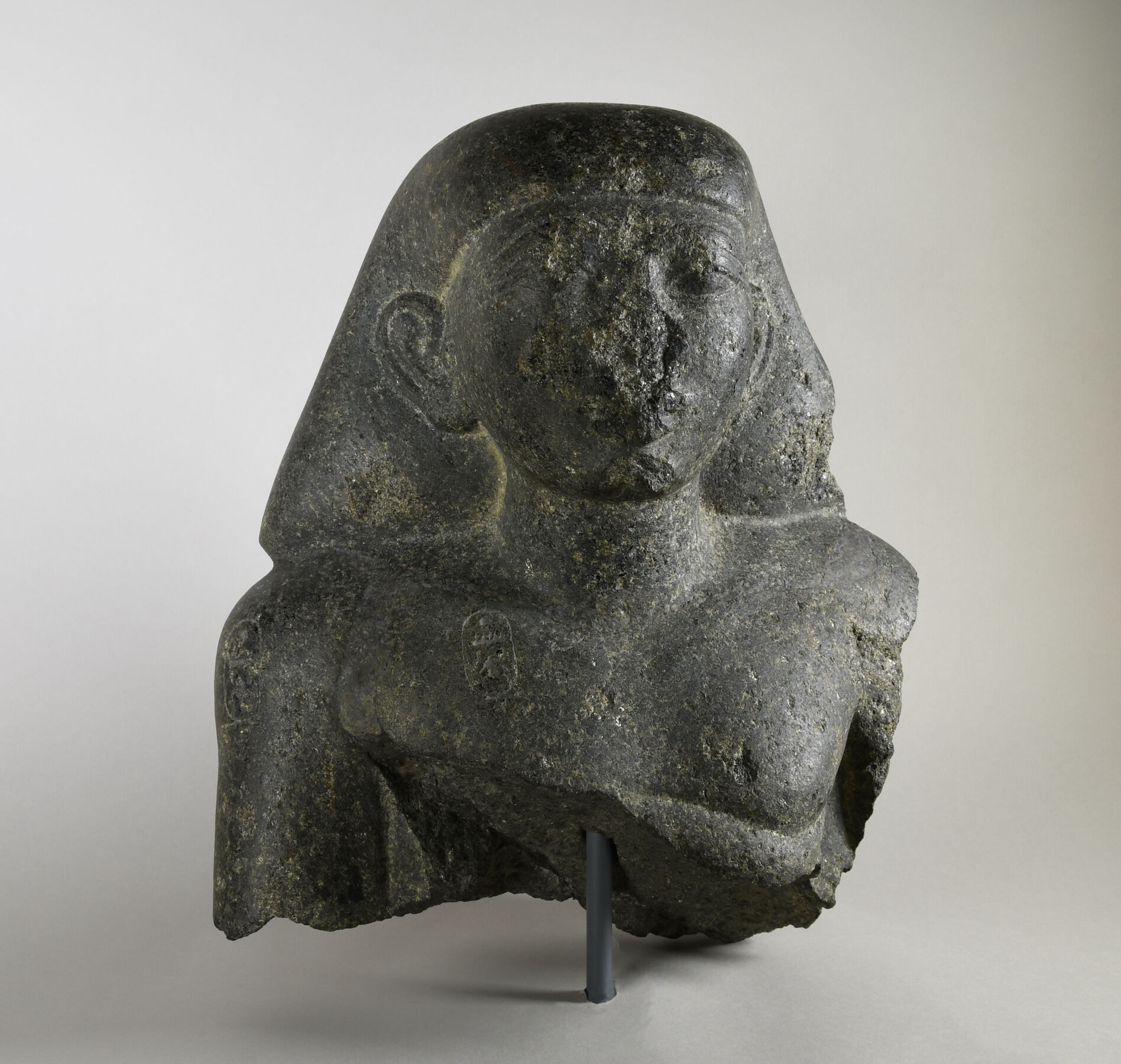King Thutmose III transformed Egypt into an expansionist empire. A mighty military ruler, he extended Egypt’s borders north into modern-day Syria and Turkey and south into Nubia. With these conquests came tremendous wealth, which included tribute and taxes from the new vassal states. To care for this wealth, the number of officials expanded, who also had access to artisans to sculpt their statuary.
The statue bust represents an official wearing a smooth bag wig that sits low on his forehead and extends to his shoulders. Although damaged, his face is broad with a small, rounded chin. His eyebrows and almond-shaped eyes with extended cosmetic lines are carved in raised relief. The bridge of his nose is broad, and the lips of his small mouth bulge slightly. The remains of his chest show two stylized folds of fat, typical of a seated or cross-legged male statue pose.1 The folds denote an overweight, mature man of high status, a stylistic device first seen in the Old Kingdom.2 The statue bears two cartouches of Thutmose III’s throne name Menkheperre on his right pectoral and upper arm. The royal cartouches indicate that the statue belonged to a high official who was given the honor of writing the king’s name.3
MH
-
Cf. Romano, James F., ed. 1979. The Luxor Museum of Ancient Art: catalogue. Cairo: American Research Center in Egypt., Luxor J. 36. ↩︎
-
Russmann, Edna R. 1995. “A Second Style in Egyptian Art of the Old Kingdom.” MDAIK 51: 269–279.. ↩︎
-
Wolf, Walther. 1957. Die Kunst Aegyptens: Gestalt und Geschichte. Stuttgart: W. Kohlhammer.. ↩︎
Bibliography
- Romano 1979
- Romano, James F., ed. 1979. The Luxor Museum of Ancient Art: catalogue. Cairo: American Research Center in Egypt.
- Russmann 1995
- Russmann, Edna R. 1995. “A Second Style in Egyptian Art of the Old Kingdom.” MDAIK 51: 269–279.
- Wolf 1957
- Wolf, Walther. 1957. Die Kunst Aegyptens: Gestalt und Geschichte. Stuttgart: W. Kohlhammer.
